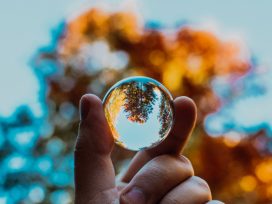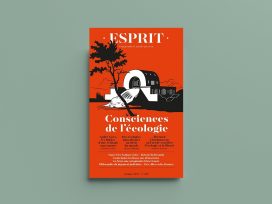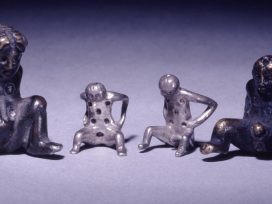To be alive in a disrupted world
Natural disasters dissolve the fundamental distinction between the human and the natural worlds. At this moment, we discover that we are surrounded by silence. On art and philosophy amidst ecological crisis.
According to the philosopher Timothy Morton, we are caught in a world of ‘hyperobjects’. These entities are distributed so widely across time and space that they exceed our ability to measure them, since our worldview is anthropocentric.1 Even though we are always interacting with them, we cannot be sure that they are real; though we inhabit the world, it remains ungraspable, totally separate from human thought. Following Morton, we might say that the realness of the world is bound up with a certain mystery: worldly things are unspeakable or secret, withdrawing from our human mode of access.
In his Realist Magic, Morton argues that ‘because a thing withdraws, it disturbs us with an excess over what we can know or say about it, or what anything can know or say about it – this excess is a nothingness, not absolutely nothing, but not something to which one can point.’2 In Morton’s view, a thing’s excessive nature is formulated in terms of its ‘nothingness’. How can we conceive this? Insofar as a thing arises in the real world, it has a physical existence. According to Morton, something is ‘there’. It is, he says, ‘a certain physicality whose phenomena I cannot predictably demarcate from its reality in advance.’3 Yet, insofar as it withdraws from human grasp, it is felt to be non-existent.
In my view, the realness of things remains outside the commonplace human lifeworld. Or, rather, it is on the ‘outer-edge’ of the ordinary world. We might say that there is a gap between the lifeworld and the real world. As is shown in the film The Matrix (1999), the normal, everyday world might be suffocated with an entirely false ‘wealth of experience’. And, in contrast, the real world is the deteriorated world, that is, as Slavoj Žižek puts it, ‘what remains of our reality outside the Matrix after the catastrophe’.4 When catastrophic events happen, we feel that we have fallen into the real world in which ruinous and deteriorated circumstances prevail, overwhelming human existence. Yet, in the real world, things are not in a totally ruined state. There remain ‘cracks’ through which some miracle might still happen.
I contend that the world in which human life is rooted is ‘double’. Its doubleness cannot, however, be sublimated into a further unified form. We inhabit the doubleness of the world, its ‘in-betweenness’. On the one hand, the world is that of human beings, distinct from the natural world. At the same time, we live in a world of natural things that exceeds any human presence. Natural disasters, for example, make us feel that the fundamental difference between the human and the natural world has dissolved. The stakes of his kind of thinking involve modifying our basic idea of the world – that is, the world as the condition for the possibility of human existence – when faced with the dreadful reality of ecological crisis.
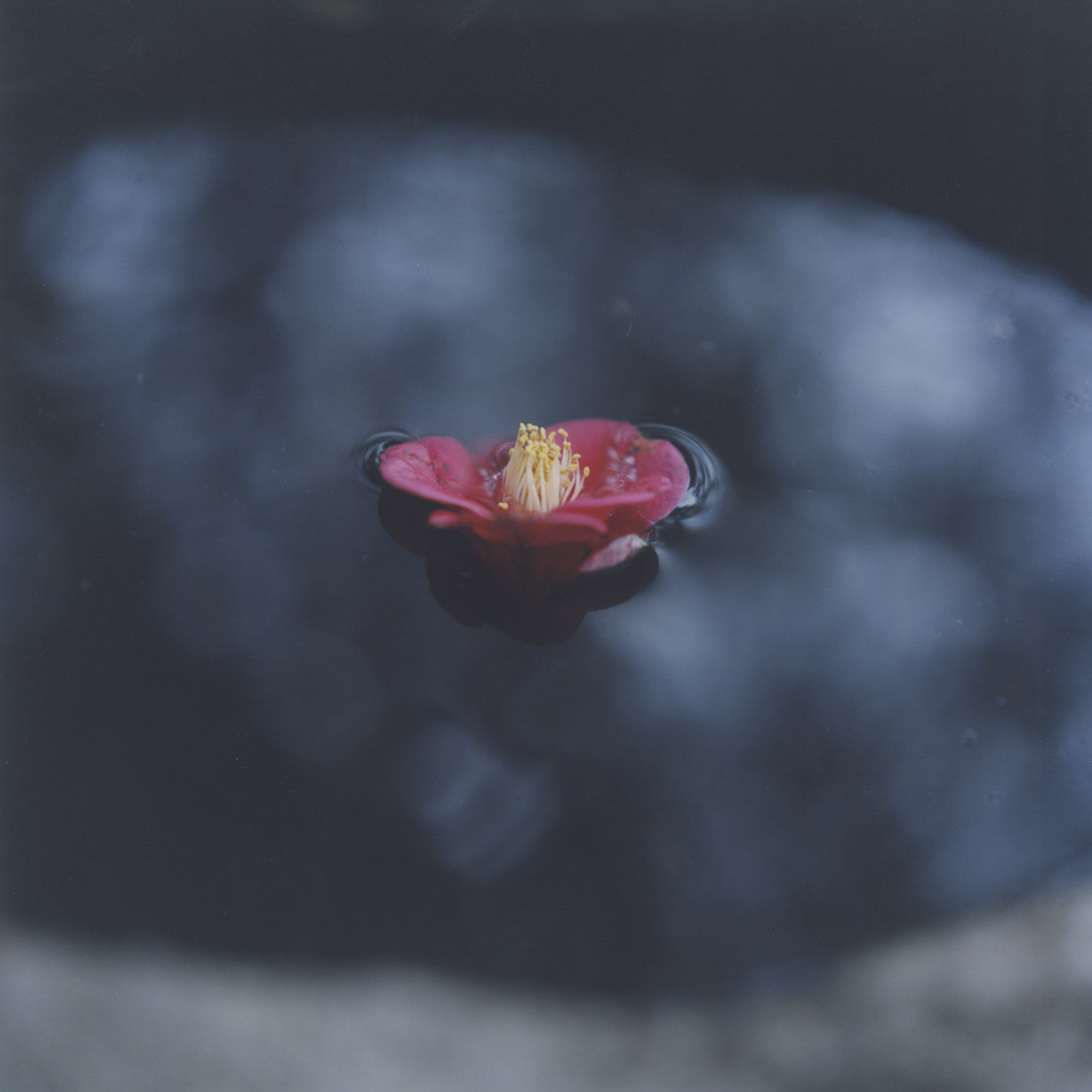
Untitled (c) Rinko Kawauchi
Quietness as the human condition
Catastrophic events (earthquakes, typhoons, floods, tsunamis) overwhelm us with forces that transcend our capacity to measure them. When an ecologically disruptive event happens, we face a dramatic upset in what Raymond Williams would call our ‘structure of feeling’.
In Japan, the triple catastrophe of an earthquake, a tsunami, and a nuclear disaster (known as ‘3/11’) is still decisive for us. There have been various responses to it. Of particular importance is photographer Rinko Kawauchi’s book Light and Shadow.5 Novelist and photographer Teju Cole says Kawauchi’s work is one of several reactions to the tragedy, while also reaching beyond it to give us a new language.6 Personally, I am fascinated with the sense of quietness evoked by her photos. In her afterword, she writes:
Against this leveled ground of rubble, the sky looked broader and more expansive than ever. Standing there for a while, I considered the smallness of my existence; so small that even a gust of wind could have blown me away. In that moment, I could also feel the reality of standing right here, in this body. To grasp that we exist, silence is necessary.7
These words allow us to reflect on the idea that another kind of world is possible in the future. This has a great deal to do with how we understand the vastness of a world that exceeds the miniscule stature and perspective of human beings. We do not normally pay attention to it but, once human life is unsettled by a natural disaster, we are thrown into the vastness of the surrounding world.
Kawauchi’s visualization of the world does not just superficially represent ordinary life. It arises, rather, in one of the slight cracks that opens in the midst of ordinary life. Her statement suggests that her photographic practice is grounded by one key conviction: that silence is the fundamental condition of human existence. How are we to think about this?
Firstly, silence is about inwardness; it is about how things withdraw from the openness of public world. Yet this is not necessarily to be conflated with what is merely private or isolated. As Kevin Quashie discusses in an essay on the music of Miles Davis and John Coltrane, we might say that interiority is, in fact, expressive. Silence concerns, he says, ‘all the chaotic and creative energies that shape one’s human self, that expansive range of feelings and desires and capacities that are beyond one’s control but that alight everything.’8 Perhaps this means that silence, as the source of expression, brings forth the stillness that remains outside the ossified public sphere where limited imaginations tend to have the dominant say, spouting only stereotypes. Kawauchi’s pictures visualize the stillness in the midst of a disrupted world in such a way as to make us aware of the real, subterranean physicality of the world.
Silence has, secondly, something to do with a certain feeling of ‘realness’ that makes us sure we are alive. Yet, ordinarily, it remains ungraspable, outside of the realm of ordinary life. At the moment when the lifeworld is disturbed and begins to crumble, we discover that we are surrounded, even subtended, by silence. This arises in the midst of the leveled ground of rubble, released from the constraint of ordinary life in what Deleuze would call ‘societies of control’. Kawauchi finds the ground upon which she can feel her existence in a disintegrated world. This openness admits the interaction between many elements released from the constraints of the ordinary human world.
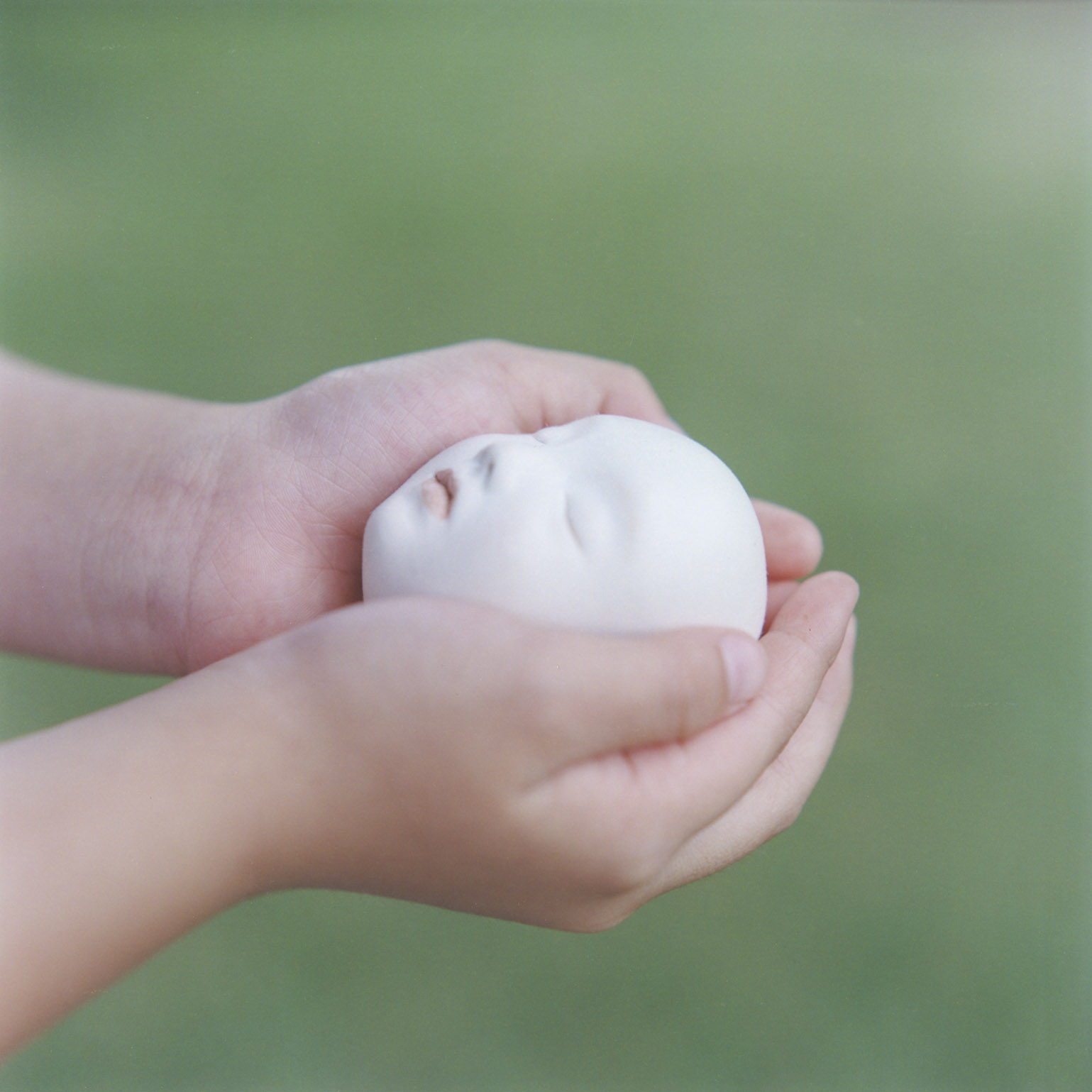
Untitled (c) Rinko Kawauchi
Open-ended place and its fragility
Kawauchi has said in interview that:
I need many elements to come together in a series to create a mood … not just portraits, but landscapes and tiny details and also the mood, the sky, the air. It’s about creating mystery, but also expressing my own feelings about time passing, the fragility of life. They are metaphorical images, really, [about] how fragile our world is.9
I contend that Kawauchi and Morton share a sense of the fragility of the world. Their common intuition is that the world we inhabit is part of a greater interconnected whole. It is a vast, open plane on which various things can coexist and create a fluid, sensuous mood. Yet, as Kawauchi’s ‘sympathy with small things in the bigness of nature’10 suggests, she does not admire the totality of nature itself. Rather, she is profoundly aware of the realness of the small things that are not forcibly integrated into a fixed whole. For that reason, the realm of interconnectedness is open-ended, transcending our conceptually-fixated framework. For Kawauchi, the vastness of this domain must be thought together with the tininess of multiple things. While various elements intersect with each other, they are not reduced to a stable whole – they still hold their own singular ‘whateverness’.
Kawauchi says that her method is ‘about finding a certain space of mind’:
When I am shooting, I am following my intuition without thinking. Thinking too much is boring, not good. It stops the surprising from coming through. When a picture happens, I just say ‘thank you’ and move on. It is only afterwards that I become an editor and impose the meaning on the work.’11
We can argue that Kawauchi touches the realness of the sensuous realm in which various things happen. Kawauchi’s intuition might suggest that the realm of interconnectedness itself goes beyond human thought. Morton has a similar formulation when he says that ‘one finds oneself on the insides of much bigger places than those constituted by humans’.12 When we enter this sphere, we might feel the time of worldly reality passing by, opening up an awareness of the unstable foundation of our own existence.
Both Kawauchi and Morton, likewise, touch on the frailty of the world. Kawauchi evokes the interconnected realm’s lack of permanence when she refers to her ‘feelings about time passing.’13 This is to say that everything is relentlessly passing, never to be fixed because the interconnected realm is inherently unstable. Similarly, Morton touches on its impermanence. He asserts that ‘in order to exist, objects must be fragile.’14 This is why their domain – the aesthetic dimension, where death occurs – is uncanny and mysterious. ‘It turns out,’ he continues, ‘that objects are dying around us all the time, even as they give birth to other objects.’15 This is to say that what is fragile is not just the ecological sphere itself. Each of the various elements that come together are themselves delicate and incomplete. In this place, many elements coexist without being congealed into a single whole. Kawauchi’s sense of reality is in accord with the ‘emptiness’ of Morton’s aesthetic dimension, an idea he takes from Buddhism: ‘a light-touch sense of the openness and illusoriness of things, without cynicism’.16 Perhaps this means that the ecological realm is not a firm substrate but, rather, something more ephemeral and fluid – sensuous yet intangible, and always beyond conceptual grasp.
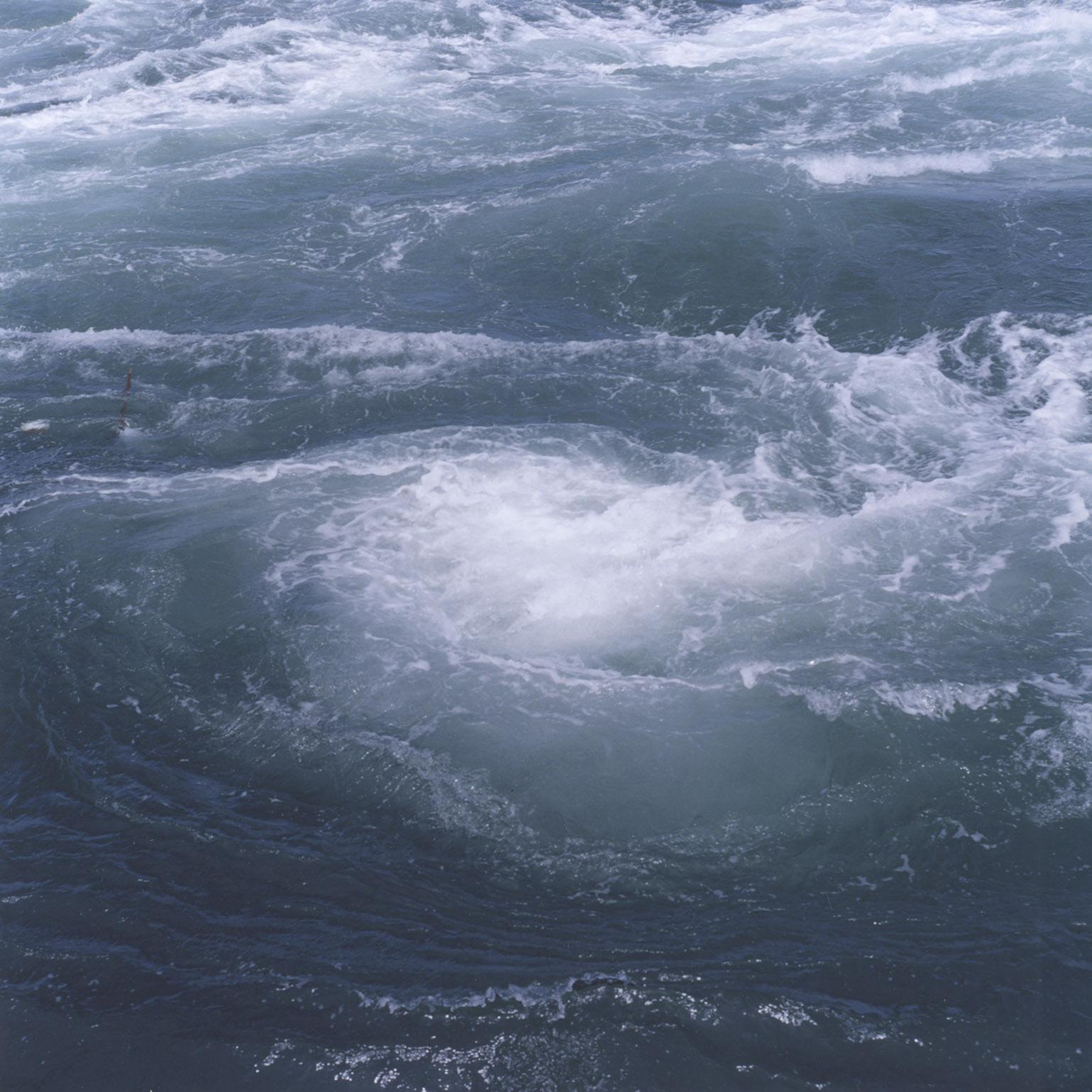
Untitled (c) Rinko Kawauchi
Sound portrait of the subterranean reality
When disaster strikes, the shock is not limited to bodily and mental suffering. It might be more spiritual and internal. During 3/11, we were aware of the gap between the ordinary human world and the real natural world. In this respect, sound artist Hideki Umezawa’s music is crucial. His piece Portrait Re:Sketch is a subtle response to the aftermath of the disaster.17 By mixing and amplifying electronic sounds, voices, and rumbling noises, he creates an audio portrait, an abstract sound scene, articulating our existential anxiety in which panic and quietness are intermingled. Umezawa explains to me that the piece is an inquiry into the unconscious, preverbal atmosphere from which human bodies and interiorities are organized – the environment and relationship that surrounds him. If what he means by ‘environment’ implies a sonic force, we might say that his feeling resonates with Deleuze’s concept of ‘sonorous materiality’. Deleuze scholar Claire Colebrook argues that this refers to Deleuze’s concerns with ‘the organization of sound matters into the beating out of a tempo and the distribution of tonalities’.18 Following Deleuze, we can argue that Umezawa’s music captures the primordial sonorous matters from which the bounded human body emerges.
Yet the music’s sonorous materiality is slightly different from the pristine sound prior to the noise pollution typical of modern life. Umezawa explains to me that the piece Prepared Garden was composed of various voices and sounds recorded from televised news reports about 3/11, refined and organized into an artwork. The title derives from Umezawa’s feeling that the spectacular images broadcasted on television are unreal. It’s as though the natural disaster is enclosed inside an artificial miniature garden and mechanically controlled, its realness reduced to mere images. This is to say that the circulation of voices and images is bounded by a public sphere made up of stereotypes. Umezawa’s feeling is, in this respect, consonant with Guy Debord’s idea of the society of spectacle.
For Debord, modern life is nothing but an immense accumulation of spectacles where ‘Everything that was directly lived has receded into a representation.’19 The problem is how we overcome the separation between directly lived experience and the spectacular realm produced by the mass media. It is so difficult to overcome the latter because the images it gives us are so tangible, so real-seeming.
At the moment of the disaster, we realize that the society of the spectacle is not solid at all. It becomes apparent that it is in sustained contact with times and spaces that exceed any human presence; we realize there is a gap between the spectacular and the natural world. In the face of the instability of the former, Umezawa extracts pure sonorous matter in the disguise of the sonic mass media, rendering its suppressed stillness of natural world audible. He tries to liberate images and voices artificially generated by the spectacle by extracting pure inaudible materials from them. In this way, his sound brings about a subterranean soundscape distinct from the spectacle.
A delicate space of safety
How can we fabricate a condition of habitability in which decent life can become possible, even when everything around us seems to be disrupted? How can we live decent lives after natural disasters, even when everything around us seems to be in chaos? This essay explores the existential condition upon which we can feel the reality of being alive in the midst of the disrupted world, where the distinction between the human world and the natural world becomes blurred. Philosophical thinking during the current ecological crisis needs to proceed in resonance with various contemporary art projects. What is crucial to me is Kawauchi’s imagery of quietness in the midst of disaster and Umezawa’s sound portrait of the dark subterranean reality which is apart from the surface of the spectacular society. Both remind us of the aesthetic realm that is witnessed as a gap that is opened in the midst of the human world. According to Morton, there is a gap between what a thing is and how it appears.20 The artistic practice of giving voice to things is to make their hidden ‘thingness’ happen against the predominance of ordinary everydayness.
In some sense, their artistic practice is consonant with Japanese sense of fragility. Especially, it concerns the ephemerality of various rituals such as HANAMI. What is important about those rituals is to watch natural things that are surrounding the human lifeworld. HANAMI, an act of watching flowers, is an immersive event. People go out and watch natural things such as flowers. Such rituals involve an immersive awareness of the natural background to the human lifeworld. Sometimes, people spread out a mat in a small place such as a park and gather together to celebrate the coming of spring or to cheer themselves up. Yet, traditionally, those rituals are restrained by etiquette. Rather than being defined by a rigid set of rules, they are instead refined in resonance with the subtlety of the natural world. The delicate space of safety blurs the distinction between human and natural spaces.
The emphasis on unclear and blurred states resonates with Morton’s sense of ‘in-betweenness,’ which focuses on the dissolution of the boundary that demarcates the human world. In his view, ‘such a boundary depends on a smoothly bounded, impermeable human world.’ The prospect of ecological catastrophe means that such a boundary cannot be maintained any more. ‘The notion of (smooth, complete) world as such is also broken.’21
The boundary surrounding the human world itself has become blurred in such a way as to become fragile and penetrable to the outside. Ahead of philosophical thinking, various artists grasp it in the form of visual or acoustic figurations that reveal the subtle reality of the natural world. Beginning with the feelings of fragility and contingency, we can redesign the human world as the viable condition upon which human life becomes alive. It is the dark sensual realm of undifferentiation within which a radically different futurity of human beings can be opened.
Timothy Morton, Hyperobjects: Philosophy and Ecology After the End of the World (Minneapolis: University of Minnesota Press, 2013), 1.
Timothy Morton, Realist Magic: Objects, Ontology, Causality (Ann Arbor: Open Humanities Press, 2013), 47.
Timothy Morton, ‘Buddhaphobia: Nothingness and the Fear of Things,’ in Marcus Boon, Eric Cazdyn and Timothy Morton, Nothing: Three Inquiries in Buddhism (Chicago: University of Chicago Press, 2015), 203.
Slavoj Zizek, The Parallax View (Cambridge, Mass, MIT Press, 2006), 312.
Rinko Kawauchi, Light and Shadow (Kanagawa: Super Labo, 2014).
Teju Cole, ‘Pictures in the Aftermath,’ in The New York Times Magazine, April 11, 2017. Online at: https://www.nytimes.com/2017/04/11/magazine/pictures-in-the-aftermath.html?smid=tw-share.
Rinko Kawauchi, Light and Shadow.
Kevin Quashie, ‘The Quiet of Blackness: Miles Davis and John Coltrane’, In Audio Culture: Readings in Modern Music, edited by Christoph Cox and Daniel Warner (London: Bloomsbury, 2017), 73-84 (74).
Sean O'Hagan, ‘Sympathy with small things: the luminous fragility of Rinko Kawauchi.’Guardian, October 26, 2018. Online at: https://www.theguardian.com/artanddesign/2018/oct/26/rinkokawauchi- taylor-wessing-photographic-portrait-prize-national-portrait-gallery
Ibid.
Ibid.
Timothy Morton, Dark Ecology: For a Logic of Future Coexistence (New York: Columbia University Press, 2016), 11.
Sean O'Hagan, ‘Sympathy with small things: the luminous fragility of Rinko Kawauchi.’
Timothy Morton, Realist Magic, 188.
Ibid.
Ibid., 223.
https://soundcloud.com/progressive-form/12-12out-pawn-hideki-umezawa
Claire Colebrook. ‘Escaping Meaning, Escaping Music,’ CR: The New Centennial Review, 18/2 2018, 16.
Guy Debord, The Society of the Spectacle, trans by. Ken Knabb (Berkeley, CA: Bureau of Public Secrets, 2014), 2.
Morton 2015: 195.
Timothy Morton, Humankind: Solidarity with Nonhuman People (London: Verso, 2017), 14.
Published 1 December 2020
Original in English
First published by Positionen 124 (2020) (German version); Eurozine (English version)
Contributed by Positionen © Masatake Shinohara / Positionen / Eurozine
PDF/PRINTPublished in
In collaboration with
In focal points
Newsletter
Subscribe to know what’s worth thinking about.
Related Articles
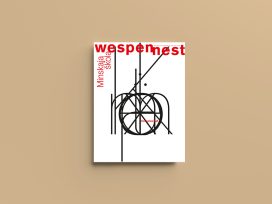
Complexity
Wespennest 188 (2025)
In Wespennest: On the definition of hyper-complex systems; why keeping it simple is not always good political communication; how complexity became the hallmark of the musical avant-garde; and how new genres and platforms are making our interaction with literature more complex than ever.
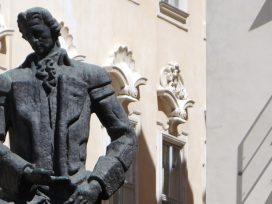
What happens to democracy when governments court the rich and highly skilled, offering citizenship as privilege, when those in need are turned away? This year’s Speech to Europe takes the concept of ‘good’ and ‘bad’ migrants to task.

